In four years, Tesco has driven prices down 30%. Clothing chief John Hoerner gives a rare interview to Liz Hamson
The problem that clothing has in Tesco is Tesco - it’s a highly productive business,” says clothing chief executive John Hoerner as he grabs a notebook and sketches an outline of a typical in-store clothing department to illustrate the challenge he faces trying to grow Tesco’s clothing business.
“It’s getting harder rather than easier. It’s not as if there’s a big hunk of space. We have to earn space in a very challenging environment.”
The former Arcadia chief executive, who joined Tesco in 2001 and refers to himself as “the coach”, has busied himself squeezing as many sales as possible from what space there is. “Our planning for clothing is very inwardly focused: 95% of what we do is doing better with the space we have,” he says.
So far, he and his 200-strong team, based at Tesco’s Welwyn Garden City offices, have done a good job of it. This week, Tesco unveiled a 28% leap in sales and the business is poised to expand further thanks to 20 new Extra stores over the next year.
However, the rate of growth has slowed from last year’s 39%. Hoerner, who will address the Marketing Society Forum on April 21, concedes that the real challenge will be long-term growth.
When Richard Brasher took over as head of non-food in 2000, clothing was a small but economically successful part of the Tesco mix. “Richard felt there was an opportunity to do a lot more,” recalls Hoerner. “It was just a fluke that I was interested in joining. The rest is history.” And what a history. In four short years, the multiple has driven clothing prices down by 30% and, with its Cherokee, Florence + Fred, and Value ranges, raised the fashion stakes to high-street levels, taking on Next and M&S with prices 40% to 50% lower.
Hoerner attributes some of the growth to a more concerted effort to identify what the customer wants. “We have made a huge effort to communicate to the Tesco customer and do a tremendous amount of research into how people use the clothing, how they feel about the size, fit, quality and fashion. Every retailer says it is a customer-focused business, but I’ve never seen a business this customer-focused.”
He said much the same when he joined and it is not empty rhetoric, judging by the team’s approach towards merchandising and range selection. “We look at every single fixture. If something doesn’t sell at the rate of sale we have set, it has to go on the sale rail. We need to keep the space productive. We cannot have anything that needs to earn its way.”
Hoerner talks of six, eight, 12 and 24-week styles. “Our turnover is as fast as a high-street retailer or faster,” he boasts.
Though Tesco is said to achieve 40% margins on some items in its Cherokee range, it is not the size of the margin that counts, he reasons. “People don’t understand margin turnover. It’s not a question of how much margin you sell at, it’s how often you sell it.”
The shift in focus to margin turnover appears to be working. Recent in-house research suggests that 40% of first-time clothing buyers are making repeat purchases.
Clearly, the coverage that garments such as Tesco’s version of “the Kylie dress” have generated in the fashion and consumer press helps. But there is a downside to all the free publicity. With the full range available in only 30 stores nationwide, and 70% to 80% of the range in a further 100 stores, availability is an issue. “I get a lot of grief from customers who can’t get hold of items at their local store,” admits Hoerner. “It has been frustrating because they read about something and want to buy it.”
Tesco is attempting to address the problem by putting press coverage alongside details of where items are available on its web site. Hoerner remains keen to deliver on the pledge to drive sales through the internet.
“I would have liked to have put clothing on the web sooner, but we had to concentrate on the stores first.
“Over the next year we’re getting some big Extra stores with big clothing departments. Our next challenge is to fully range those stores. Our immediate priority is to expand our range.”
Quite how much by, he won’t say. But he insists the focus will be equal across the three key brands. “It depends on the characteristics of the marketplace.” Tesco will also offer larger sizes, he reveals: “We’re going to see an expanded 16-26 size range.” There will be further growth of the children’s range and the trial with Finest menswear will also continue, he adds.
However, although a standalone non-food format is under consideration, Hoerner does not want to see a standalone clothing format. “My choice would always be to be within a Tesco.”
Hoerner is unapologetic about the retailer’s aggressive price agenda, which has driven the cost of a pair of Value jeans down to £3. “Most people do not know where our clothes come from. They think we go to the supplier and beat them round the head to reduce their prices. That’s not what we do.
“We try to get three costings and we negotiate very hard on price. But we don’t buy anything that does not meet our quality or ethical standards.”
To give some idea of the extent of Tesco’s buying power, it now sources 90% of its clothing overseas, three quarters of it directly. One factory in Sri Lanka, from which it sources directly, also supplies Gap, Next and M&S via agents and therefore at higher costs, not just because of the intermediaries, but the quantities ordered. “We might buy 30,000 pieces. An agent might buy 3,000,” says Hoerner of its international sourcing network, which stretches from China and Hong Kong to Turkey and Bangladesh. “We do it because we can.”
Although half of all Tesco customers bought clothing last year, some analysts remain sceptical. One questions why Tesco doesn’t divulge the breakdown of sales across its brands and ponders whether Cherokee is growing faster than Florence + Fred.
Hoerner says only that Cherokee accounts for around a third of sales, but adds of persistent rumours that Tesco wants to buy Cherokee: “Clearly, we’re very happy with the arrangement. Obviously it’s something we’d look at.” He also confirms that Tesco is close to appointing a head of design.
Now Jason Tarry is running the UK clothing business, Hoerner has taken a more strategic role, supervising international sourcing and helping brand development on the internet.
It will remain tough to grow the business physically, he concedes, but there is still a long way to go in terms of buying power. “What is really important about the Tesco philosophy is that we’re trying to sell for less. If we sit down with the people in Sri Lanka and say we’re going to take the price down, everyone gives a little bit - the cloth guy, the hanger guy, the factory guy, us - and we double the order. Never once do we talk about dropping quality.”
The problem that clothing has in Tesco is Tesco - it’s a highly productive business,” says clothing chief executive John Hoerner as he grabs a notebook and sketches an outline of a typical in-store clothing department to illustrate the challenge he faces trying to grow Tesco’s clothing business.
“It’s getting harder rather than easier. It’s not as if there’s a big hunk of space. We have to earn space in a very challenging environment.”
The former Arcadia chief executive, who joined Tesco in 2001 and refers to himself as “the coach”, has busied himself squeezing as many sales as possible from what space there is. “Our planning for clothing is very inwardly focused: 95% of what we do is doing better with the space we have,” he says.
So far, he and his 200-strong team, based at Tesco’s Welwyn Garden City offices, have done a good job of it. This week, Tesco unveiled a 28% leap in sales and the business is poised to expand further thanks to 20 new Extra stores over the next year.
However, the rate of growth has slowed from last year’s 39%. Hoerner, who will address the Marketing Society Forum on April 21, concedes that the real challenge will be long-term growth.
When Richard Brasher took over as head of non-food in 2000, clothing was a small but economically successful part of the Tesco mix. “Richard felt there was an opportunity to do a lot more,” recalls Hoerner. “It was just a fluke that I was interested in joining. The rest is history.” And what a history. In four short years, the multiple has driven clothing prices down by 30% and, with its Cherokee, Florence + Fred, and Value ranges, raised the fashion stakes to high-street levels, taking on Next and M&S with prices 40% to 50% lower.
Hoerner attributes some of the growth to a more concerted effort to identify what the customer wants. “We have made a huge effort to communicate to the Tesco customer and do a tremendous amount of research into how people use the clothing, how they feel about the size, fit, quality and fashion. Every retailer says it is a customer-focused business, but I’ve never seen a business this customer-focused.”
He said much the same when he joined and it is not empty rhetoric, judging by the team’s approach towards merchandising and range selection. “We look at every single fixture. If something doesn’t sell at the rate of sale we have set, it has to go on the sale rail. We need to keep the space productive. We cannot have anything that needs to earn its way.”
Hoerner talks of six, eight, 12 and 24-week styles. “Our turnover is as fast as a high-street retailer or faster,” he boasts.
Though Tesco is said to achieve 40% margins on some items in its Cherokee range, it is not the size of the margin that counts, he reasons. “People don’t understand margin turnover. It’s not a question of how much margin you sell at, it’s how often you sell it.”
The shift in focus to margin turnover appears to be working. Recent in-house research suggests that 40% of first-time clothing buyers are making repeat purchases.
Clearly, the coverage that garments such as Tesco’s version of “the Kylie dress” have generated in the fashion and consumer press helps. But there is a downside to all the free publicity. With the full range available in only 30 stores nationwide, and 70% to 80% of the range in a further 100 stores, availability is an issue. “I get a lot of grief from customers who can’t get hold of items at their local store,” admits Hoerner. “It has been frustrating because they read about something and want to buy it.”
Tesco is attempting to address the problem by putting press coverage alongside details of where items are available on its web site. Hoerner remains keen to deliver on the pledge to drive sales through the internet.
“I would have liked to have put clothing on the web sooner, but we had to concentrate on the stores first.
“Over the next year we’re getting some big Extra stores with big clothing departments. Our next challenge is to fully range those stores. Our immediate priority is to expand our range.”
Quite how much by, he won’t say. But he insists the focus will be equal across the three key brands. “It depends on the characteristics of the marketplace.” Tesco will also offer larger sizes, he reveals: “We’re going to see an expanded 16-26 size range.” There will be further growth of the children’s range and the trial with Finest menswear will also continue, he adds.
However, although a standalone non-food format is under consideration, Hoerner does not want to see a standalone clothing format. “My choice would always be to be within a Tesco.”
Hoerner is unapologetic about the retailer’s aggressive price agenda, which has driven the cost of a pair of Value jeans down to £3. “Most people do not know where our clothes come from. They think we go to the supplier and beat them round the head to reduce their prices. That’s not what we do.
“We try to get three costings and we negotiate very hard on price. But we don’t buy anything that does not meet our quality or ethical standards.”
To give some idea of the extent of Tesco’s buying power, it now sources 90% of its clothing overseas, three quarters of it directly. One factory in Sri Lanka, from which it sources directly, also supplies Gap, Next and M&S via agents and therefore at higher costs, not just because of the intermediaries, but the quantities ordered. “We might buy 30,000 pieces. An agent might buy 3,000,” says Hoerner of its international sourcing network, which stretches from China and Hong Kong to Turkey and Bangladesh. “We do it because we can.”
Although half of all Tesco customers bought clothing last year, some analysts remain sceptical. One questions why Tesco doesn’t divulge the breakdown of sales across its brands and ponders whether Cherokee is growing faster than Florence + Fred.
Hoerner says only that Cherokee accounts for around a third of sales, but adds of persistent rumours that Tesco wants to buy Cherokee: “Clearly, we’re very happy with the arrangement. Obviously it’s something we’d look at.” He also confirms that Tesco is close to appointing a head of design.
Now Jason Tarry is running the UK clothing business, Hoerner has taken a more strategic role, supervising international sourcing and helping brand development on the internet.
It will remain tough to grow the business physically, he concedes, but there is still a long way to go in terms of buying power. “What is really important about the Tesco philosophy is that we’re trying to sell for less. If we sit down with the people in Sri Lanka and say we’re going to take the price down, everyone gives a little bit - the cloth guy, the hanger guy, the factory guy, us - and we double the order. Never once do we talk about dropping quality.”



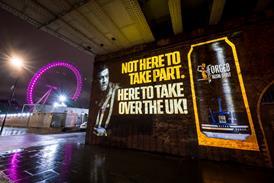



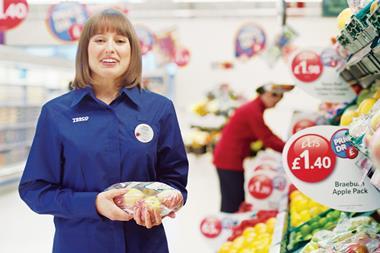



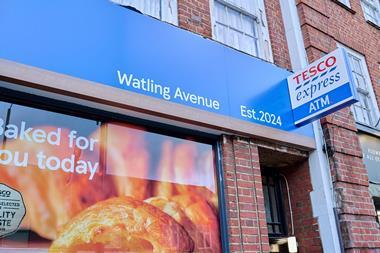
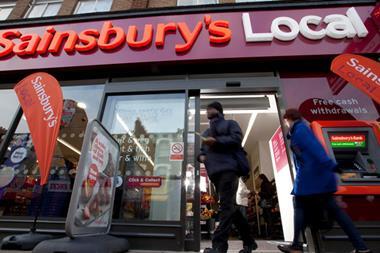
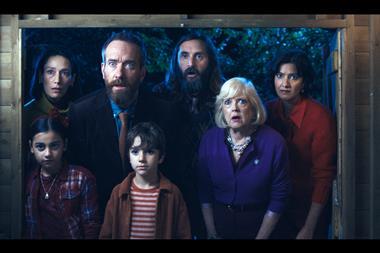
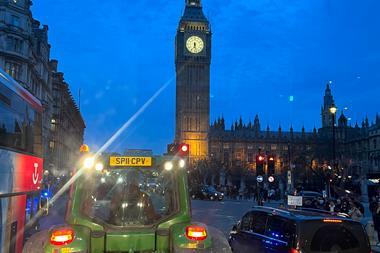

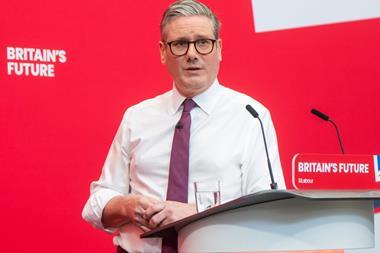

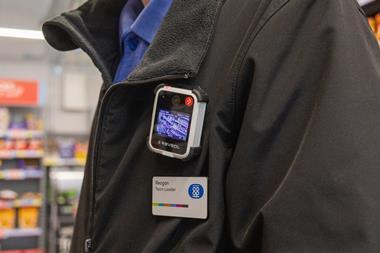
No comments yet